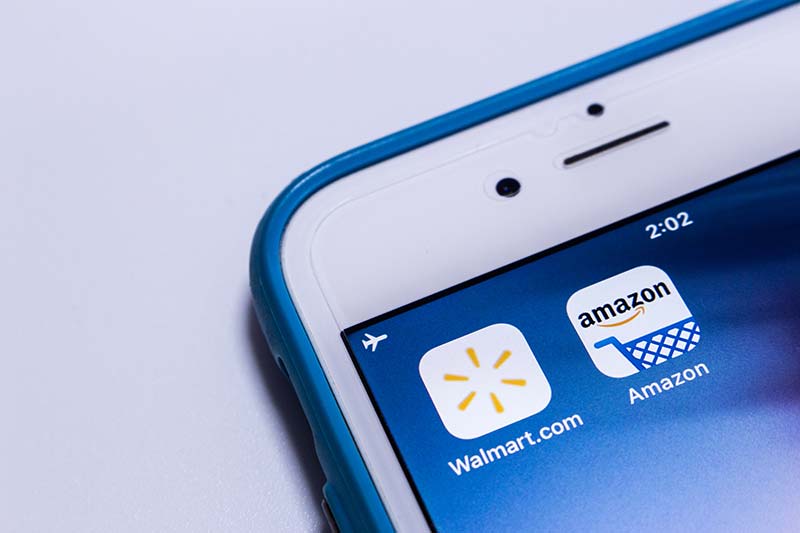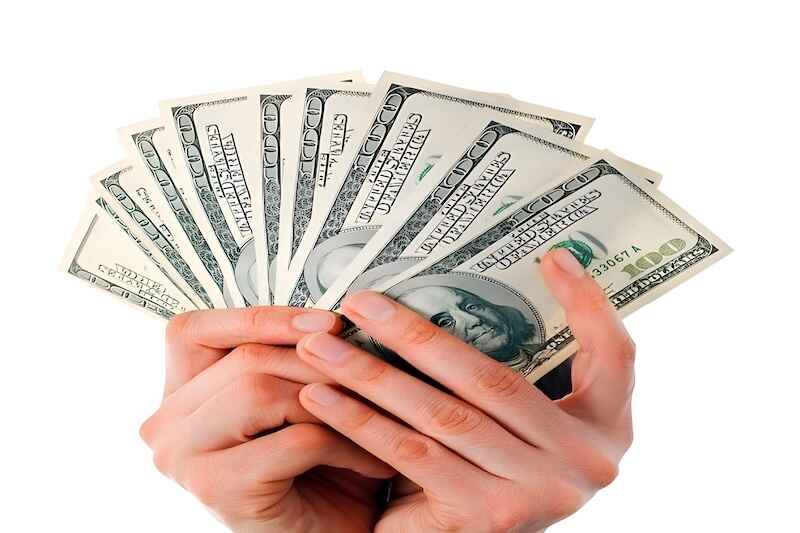Buy This, Not That: Investors Are Hungry for These 5 Dividend Stocks
Shah Gilani|February 14, 2024
Yesterday’s inflation shock underscored the Fed’s resistance to rate cuts.
Rates will stay higher for longer… so investors will keep hunting for high-yield dividend stocks.
That much was clear when I asked for your stock submissions for Buy This, Not That.
This week I look at five reader-requested stocks… all with one thing in common.
They all pay dividends… but are they worth buying? After all, dividends don’t tell the whole story. Some companies can afford to pay their dividend… and others go in debt to pay it.
That’s trouble…as you’ll soon see.
See which reader-requested stocks are BUYs and which are NOT in today’s video.
Click on the image below to check it out.
Transcript
Hey everybody. Shah Gilani here with your weekly BTNT as in Buy This, Not That. Today, I want to first of all say happy Valentine’s Day and second of all, thank you guys for sending in stocks you want me to BTNT on. Keep them coming. I love hearing from you and I love commenting on the stocks. There’s no particular theme here today. There are a few in a similar category, but it doesn’t matter. I want to hear what you guys want me to comment on. So mailbag@moneymappress.com, send me stocks you want me to talk about whether I think they are buys or not. So here we go. First up is an old favorite of mine, Ruger. Sturm, Ruger, the gun manufacturer, symbol RGR. Now I like it. I think it’s a buy. It’s a buy for probably not the reasons that a lot of people would like it to be a buy.
I used to love it for its dividend, but the dividend has been cut. The dividend now is based on 40% of their net per quarter. So it’s a variable dividend. A lot of people don’t like that. I liked it when it was more secure, but the stock has paid the price because of it. And I’m looking at it and it’s pretty much… But however, down at $43 and change I think it’s a good opportunity to buy it here. Not really for the dividend, though it’s variable. They could have a good quarter, a good bunch of quarters and you could get a handsome dividend yield out of it. Yes, it’s entirely possible. You could get three, four, five, 6% out of Ruger out of any given year, which is not the reason to buy it because it’s variable. And I don’t love variable dividends unless they’re in the energy sector.
So as far as Ruger goes, stock has paid the price. But I like it down here, if you look at it they came out and back in November they got absolutely slammed again on a lack of dividend enthusiasm. Investors dumped the stock and it really kind of hovered around. It’s 200-day at 54 and change and it just collapsed. And then before you know it’s trading 45, well, it’s trading 43 and change. Now I like it down here, not for the dividend. I like it because it’s a small cap. I like small caps down here. If the economy’s going to continue to power along as it’s been doing, small caps are going to eventually catch up and do well and this is a small cap. Market cap, $761 million. It’s got $730 million in revenue on a market cap of $761 million. I love that. Profit margin, 21%. It gets better, $173 million in cash on the books.
$1.6 million, tiny, in debt. I like it down here. Listen, this would be a company to buy. You cut the dividend, you keep all that money for yourself. This is a good company given its revenue, given its market cap. Buy this thing for 20, 30% premium and keep paying yourself. If I’m a private equity company, I’m going to buy this. I’m going to try and get it cheap, but then you get into bidding war. That’s why I like it, at some point this looks really cheap and it looks cheap now. So RGR for Ruger, it’s a buy. Next up, Paramount Global, symbol PARA. Now Paramount Global is huge revenue. We’re talking right around $13 in change, $30 billion revenue. Okay, screaming they’re doing well. They’re bringing in money, but guess what? The profit margin as far as that giant revenue minus, negative profit margin, negative 3.65%. So pretty horrible.
So not making any money on that giant revenue. They got to fix the house and it’s a problem. It’s been a problem. And the biggest problem is probably the debt, $17 billion in debt, 1.8 in cash. Huge debt load. Given that negative profit margin, I like it down at 13. I wouldn’t buy it. You’ve got to get its house in order. But here’s what I would consider doing, is buying a year out or so call spread, a cheap call spread on this like a 13, $15 call spread. Buy the 13, sell the 15s, maybe even go out further or at least go out a little more out of the money. Yeah, I would play it that way cheaply because eventually they’re going to have to get their house in line and start to do something. And I think they could turn right because it’s certainly cheap, but it’s cheap for a reason. So I would not buy it, but I would speculate on it with some options if I could get them cheap enough.
You can buy say a two $50 spread for less than a dollar. I would put some money out on that. A five-dollar spread for two dollars, a dollar and 75. Yeah, I would do that. But to buy the stock, no, forget it, negative operating free cashflow. Disney, next up, DIS. The mouse that roar, the house of mouse, no, sorry, hate to say it, not. I haven’t liked Disney for a while. Yes, I know it’s had a nice pop, but it doesn’t matter. It’s a waste of capital. There’s plenty of other places you can put your capital that are moving. Disney, the low was back in October, $78 and change on an intraday basis. It just got popped up to $112. Where’s it going people? That was on February 8th, so it had a nice pop. It gapped up there, I don’t know whether it’s got the energy to go much higher. There’s got to be a lot more cost-cutting at Disney.
They got so bloated and now the cost of everything is higher since the strike, the cost of everything is going to be higher for them. And I don’t know that everything is going to do well if we start to slip economically. If we fall into any kind of a recession, I think the theme parks are going to slow down. So yeah, we’ve seen some better numbers. But here’s what bothers me about Disney, it’s very well run in terms of Bob Iger back at the helm, he’s a great financial engineer and he’s done a great job at Disney. But as far as growing the company, but he’s also done a great job at financial engineering, not quite like Jack Welsh’s financial engineering. But I like Bob Iger but his financial engineering is good to a point. What do I mean by that? This is a company that’s got 3.36% profit margin. So we’re not talking about working with a lot here.
$47.69 billion in debt, that’s what I mean by they got to do a lot of cost-cutting. Yes, the cashflow looks pretty good but that’s not a reason to own it. Quarterly revenue growth, year over year based on the last quarter 0.2%. 0.2% in revenue growth. However, the quarterly earnings growth based on the last quarter year over year up 49%. That’s a little bit of financial engineering there and that’s fine, but that’s why the stocks pop. That’s why it looks good. But to me it’s not worth a long-term capital commitment. There are other places, better places you can put your money, you can get more confidence, you’d have more confidence in your capital appreciating more. As far as the dividend here, you know what? Disney, good luck with any dividend on Disney. It’s not doing what it needs to do. And as far as Disney, let me take a look at what the… Because I don’t even know what the dividend is. Disney used to have a decent dividend.
So I’m going back to some of my charts here and let’s take a look at what the dividend is. And it takes me a while to pull stuff up on this shaky screen. I apologize. So survey says Disney. Now again, I like buying stocks for good dividend yield, but given money market funds at 5%, given the fact that at the 10-year went from 3.87% on February one to 431 yesterday, you’re going to be able to have 10s of returns and money market funds and CDs for a good while longer. So as far as Disney goes, as far as any stock that you think is good in terms of the yield, you’ve got to use the benchmark of 5%. If you’re not getting 5% and you don’t have capital appreciation potential and you have potential depreciation, then don’t. It’s just not worth it. It’s absolutely not worth chasing the stock for a three to 4% dividend yield when you can lose money as the stock goes down. Not worth it people.
So when it comes to Disney, I don’t care of the fact that it’s had a nice pop. I don’t care. I see it. For those of you who I know are big Disney fans, yes, the dividends have been cut. It’s not going back any time soon, we’re talking less than 1% now. So why would you think that Disney’s going to start to raise its dividend again? It’s not going to do it. It doesn’t have the free cash flow to do it. All right, it’s got to cut expenses. Disney, I’m sorry to say, had a nice pop for those of you that own it, good luck. But it’s not by far in my book. I don’t put my capital into something that I think is going to be a grind. Next up, Comcast. Comcast Corporation, symbol is CMCSA, trading around 42 bucks.
Sorry, it’s way too burdened with debt. We’re talking $103 billion in debt. Okay, she’s outstanding just shy of four billion. Yes, it pays a dividend 2.96%. I’m sorry people, I just don’t get where it’s going to go. As far as I like Comcast, but then again, I have stops on stuff. I get out. And as far as Comcast goes, I’m looking at the chart right now, that’s to me a whole lot of nothing. There’s nothing to get excited about. I look at it at a one-year chart and I’m like, nothing. I go to a three-year chart, well, it’s come down and it’s gone sideways. I go to a five-year chart and it’s like there’s nothing for me there. Take a look at the chart and say, “Did you put your money in there?” People tell me, “Oh, this thing’s been up north of 60.”
All right, so it’s at close to 42 now, you’re going to take that kind of risk for what? For that kind of dividend yield? No, I’m not interested in Comcast and nor should you be. I like their services but not the stock. Last but not least, Pfizer, PFE. Used to be a great dividend yielding company. It still is, except that dividend’s going to have to get cut people. So Pfizer, as much as I want to buy it down here because it’s trading cheap relative to where it’s been, not relative to the numbers because trading down here at, we’ll just call it shy of 27 on a one-year basis. Look at a one-year chart, it’s like this… Like ooh, bottom fishing time. Except the reason to own Pfizer is for growth which it’s not really doing too much with right now. And the dividend which by the way is just so you know… Let me pull it up right here for you, Pfizer dividend, are you ready for this? 6.23%.
Yes, that’s a great dividend yield except they’re not able to pay it. They’re going to have to borrow to pay that. Why? Because the net income available to common shareholders at Pfizer is $2.13 billion. It takes something like nine billion dollars to pay the dividend. Pfizer has 5.65 billion shares outstanding. The dividend rate is a dollar 68. You multiply 5.65 billion times a dollar 68, that’s how much they have to come up with every year to pay that dividend. How much are they making in the trailing 12 months? 2.13 billion. Whoa, there’s something’s you got to give and it’s going to be the dividend. So yes, Pfizer looks cheap down here. Yes, the dividend yield looks good, but it’s not just about yield, it’s about how much money are they making and are they keeping after they pay a dividend?
Oh, they’re not keeping anything because they have to borrow to pay that dividend. The dividend payout ratio on Pfizer is 443%. That’s the payout ratio, it means out of the net income available to comm and shareholders, what you like to see is a payout ratio of 40, 50, 60, 70, 80, even 90% if you get a really nice dividend. And in REITs you are talking at 90, 100% plus depending on the accounting and you’re getting the dividend. But that’s REITs, so you don’t care if it’s really high. If it’s certain energy stocks and it’s consistent and the payout ratio is 80, 90%, I don’t care if I’m getting a six, 7% dividend yield. But 443% payout ratio, that means they don’t have the money to pay the dividend and they still got to pay it until they cut it. And I think that’s what’s happening, that’s why the stock is trading down. You’re going to try and catch a falling knife with Pfizer here, I don’t see it. Quarterly revenue growth down 41%.
Sorry peeps, I want to buy Pfizer at some point but it ain’t now. As good as it looks, as cheap as it looks, as good as the dividend yield looks, a little bit of smoke and mirrors, not. That’s it for this week. Mailbag@moneymappress.com, send me more stocks. Love commenting on what you are interested in. Thanks everybody. Catch you next week. Happy Valentine’s Day. Cheers all.

Shah Gilani
Shah Gilani is the Chief Investment Strategist of Manward Press. Shah is a sought-after market commentator… a former hedge fund manager… and a veteran of the Chicago Board of Options Exchange. He ran the futures and options division at the largest retail bank in Britain… and called the implosion of U.S. financial markets (AND the mega bull run that followed). Now at the helm of Manward, Shah is focused tightly on one goal: To do his part to make subscribers wealthier, happier and more free.



